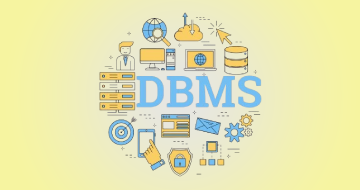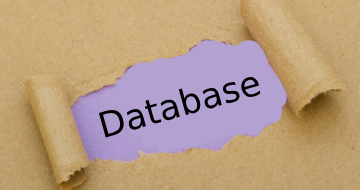IIRF Online > Development > Database Design & Development > Database Management Systems (DBMS) > Database Management System from scratch - Part 1
Database Management System from scratch - Part 1 by Udemy
Learn Database Management Systems from scratch as Database Management System forms the core of computer science
Course Highlights
- You will become very familiar with the core concepts of Database Management Systems
- You will be able to challenge the interviewer on questions related to Database Management Systems
- You will view Computer Science in a different dimension
- You will be able to answer all questions of exams like GATE,PGEE,ISRO
- You will be able to get a top grade in your Database Management Systems course in your Bachelor's degree
- Understand how Database Management Systems work
Skills you will learn!
Curriculum
3 Topics
Important Tip
Introduction
Data model and its types
7 Topics
Entity Relationship and Attribute Explained
Database Designer's perspective
ER Model and Relational Model - Advantages and Disadvantages
Basic Idea of Attributes of relationship
Simple vs Composite Attributes Single valued vs Multi-valued Attributes
Stored vs Derived Attributes
Complex Attributes
8 Topics
Degree of a relationship and Cardinality Ratio
Cardinality Ratio Explained with example
Types of Participation - Total vs Partial Participation
Example to illustrate Total and Partial Participation
More Examples on Maximum and Minimum Cardinality
Types of Relationships
Recursive Relationship
Example on finding the type of relationship
4 Topics
Tuple Field Domain and Entity vs Entity types
How Relational Model is derived from Discrete Math
Degree of a relation state of a relation Intention vs Extension
Important Rules in Relational Model
2 Topics
Types of Constraints Domain Constraints Explained
Key Constraints - Intro
8 Topics
Super Key Explained with example
More Points on Super Key
Key Explained with example
Example to illustrate the difference between Key and Super Key
Super Key vs Key vs Candidate Key vs Primary Key
Finding the number of Super Keys
Finding the number of Super Keys - 2
Finding the number of Super Keys - 3
12 Topics
Key Constraints
Entity Integrity Constraints
Foreign Key Explained with example
Example on Foreign Key
Difference between Foreign Key and Primary Key
Referential Integrity Constraints
Constraints violated by Insertion
Constraints violated by Deletion
Constraints violated by Updation and Viewing
Steps taken by DBMS in case of constraint violation
Problem on ON-DELETE CASCADE
Problem on Referential Integrity Constraint
6 Topics
Problem 1 on finding the number of Super Keys
Finding Number of Super Keys using Venn Diagram 1
Finding Number of Super Keys using Venn Diagram 2
Important Observation
Finding Number of Super Keys using Venn Diagram 3
Finding Number of Super Keys using Venn Diagram 4
21 Topics
Conversion of Entities Attributes Prime Attribute and Composite Attributes
Conversion of one-to-many relationship
Example for conversion of one-to-many relationship
Conversion of One-to-one relationship
Conversion of Many-to-many relationship
A good approach to follow but not a rule
Problem on Multivalued attributes
Problem on finding minimum number of tables needed for conversion
Problem on finding maximum number of tables needed for conversion
Special Case : One-to-one relationship with total participation on both sides
Lecture 60 continued
Weak vs Strong Entity - Differences
Example to illustrate Weak Entity and their conversion to Relational model
N-ary relationships
Identifying Relationships
Important Notations Revisit
Problem 1
Attributes to relationship : one to many relationship
Attributes to relationship : one-to-one relationship
Attributes to relationship : many-to-many relationship
Problem
13 Topics
Introduction to Functional Dependencies
Examples on Functional Dependency
Important Point to note
More Examples on Functional Dependency
Trivial Functional Dependency
Non Trivial Functional Dependency
Semi Trivial Functional Dependency
Important Point to Note
Closure set of an attribute 1
Closure set of an attribute 2
Closure set of an attribute 3
Example on finding Closure Set
Applications of Closure operation
14 Topics
Problem 1 on finding keys using Closure Operation
Problem 2 on finding keys using Closure Operation
Problem 3 on finding keys using Closure Operation
Problem 4 on finding keys using Closure Operation
Problem 4 on finding keys using Closure Operation - continued
Problem 5 on finding keys using Closure Operation
Problem 6 on finding keys using Closure Operation
Problem 7 on finding keys using Closure Operation
Problem 8 on finding keys using Closure Operation
Problem 9 on finding keys using Closure Operation
Problem 1 on finding keys of sub relation
Problem 2 on finding keys of sub relation
Problem 3 on finding keys of sub relation
Problem
6 Topics
Checking Equivalence of FD'S - 1
Checking Equivalence of FD'S - 2
Checking Equivalence of FD'S - 3
Checking Equivalence of FD'S - 4
Minimization of Functional Dependency Set - 1
Minimization of Functional Dependency Set - 2
1 Topic
Bonus : How to proceed further

Database Management System from scratch - Part 1




.webp)

.webp)


